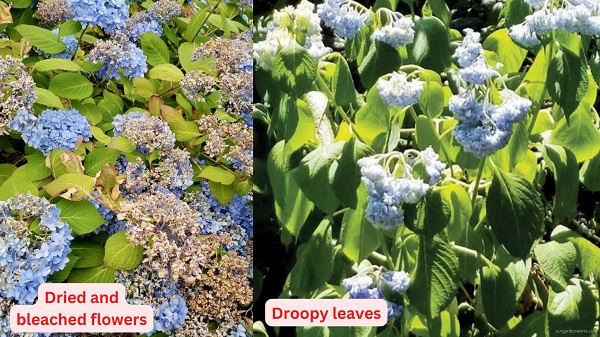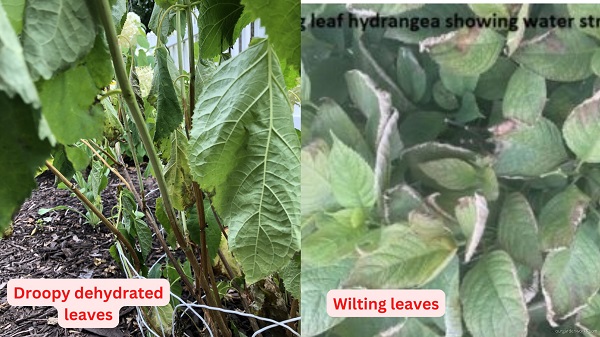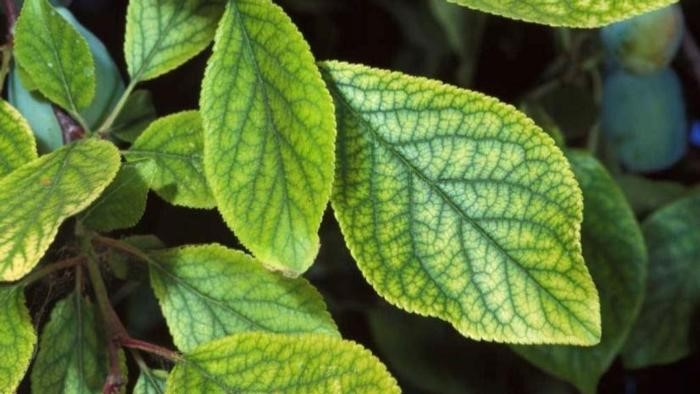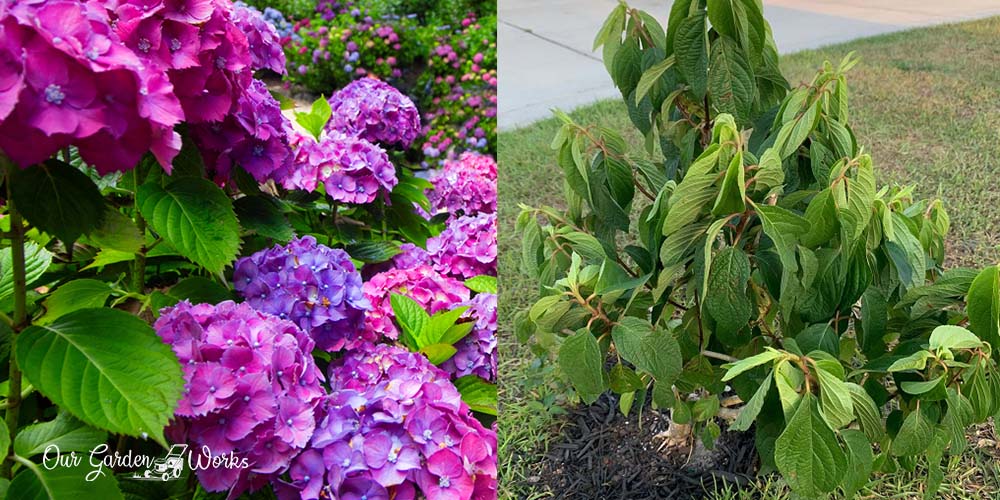Stunted growth and bloom problems are among the most disappointing and frustrating parts of gardening. Almost any plant may experience it and the beautiful flowering shrub hydrangea is not an exception.
So, if most gardeners ask, why is my hydrangea not growing let alone blooming? The answer can be more extensive than you think.
If only plants could talk and tell us where the problem is, our life as gardeners would be bliss. However, since they don’t have that ability, you’ll need to diagnose the problem through the elimination process.
In this post, we will run down the possible reasons why your hydrangeas are not growing. You can investigate your plant and try to see the signs based on the list until you get the true root cause of the problem.
It would be so much easier if you have a clear observation of your hydrangea’s behavior and environmental changes around it that could have triggered the plant stress.
Having a clear understanding of what hydrangeas need to thrive will help speed up the identification of their plant stress.
Every plant has its preferences in terms of temperature, soil moisture, sun exposure, and soil pH level. Learn the brief growing requirements of hydrangeas below.
Getting to know hydrangeas
Hydrangeas are woody shrubs that grow from spring to the last weeks of fall. In cold regions, hydrangea varieties can grow throughout spring, summer, and fall.
However, in warmer climates, they wither away in summer and come back to life in fall when the weather starts to get colder again.
Known as the symbol of gratitude and heartfelt fondness, hydrangeas have 70 species across the globe.
In the US, it grows from US Hardiness Zones 3 to 11, depending on the variety. They thrive in a temperate climate with cold weather and moist soil. They are not a fan of extreme heat or cold.
Five common species grown in the US with their respective hardiness zones are as follows:
- Panicle hydrangea (Hydrangea paniculata): 3 to 8.
- Climbing hydrangea (Hydrangea anomala subsp. Petiolaris): 4 to 8.
- Smooth hydrangea (Hydrangea arborescens): 3 through 9.
- Oakleaf hydrangea (Hydrangea quercifolia): 5 to 9.
- Bigleaf hydrangea (Hydrangea macrophylla): 5 to 11.
Hydrangeas thrive in slightly acidic soil with a soil pH level of 6.0 to 6.5. They are not moisture sensitive and can get easily stressed with drought. Some varieties can tolerate full sun and some thrive in shade.
With those nuggets of information about the growing preference for hydrangeas, let’s start dissecting the possible problem of your poor stunted hydrangeas.
Why is my hydrangea not growing – 6 possible reasons
Contrary to common belief, stunted growth and plant health decline usually start with environmental stress. Stressed plants are a magnet of fungal disease and pests which worsens the hydrangea’s health.
Here are the potential causes of environmental stress on hydrangeas:
#1 Excessive sun exposure

Hydrangeas need direct sun but the duration depends on the climate and their variety. They typically enjoy the mild direct sun when the weather is still cold in spring or fall.
However, most generally prefer morning sun exposure and partial shade in the afternoon with some exceptions.
Some hydrangea varieties are more tolerant to the full sun, such as:
- Panicle hydrangea.
- Pinky Winky hydrangea.
- Limelight hydrangea.
- Quickfire hydrangea.
- Quercifolia hydrangea.
- Bigleaf hydrangea.
Ideally, it’s safe to expose hydrangeas to full sun in US Hardiness Zones 5 to 7 where it’s cool and does not cause heat stress to the shrub.
US Hardiness Zones 8 to 9 are warm climates with sunny days that are too hot for hydrangeas. They’ll need partial shade in these areas to avoid heat stress and sun damage.
Hydrangeas bloom best in temperatures around 50℉ to 60℉. Excessive sun exposure to hydrangeas with low tolerance to full sun or heat waves can stress them causing the following problems:
- Stunted growth.
- Droopy leaves.
- Bleached blooms.
- Short-lived blooms.
- Sunburn leaf injury like yellowing or browning of leaves.
Hydrangeas are cold-loving shrubs since their natural habitat is under the canopy of trees in the woodlands. Observe the sun exposure of your sick hydrangeas, as it might be the main reason why it’s not developing any leaves, growing tall, or producing flowers.
How to treat heat-stressed hydrangea
According to Oregon State University, when hydrangeas are under heat stress, they will try to cool themselves through increased moisture absorption.
Once they can no longer get enough water from the soil and humid air, they will start showing scorched and droopy leaves as well as poorly developed blooms.
If you have an unusual heatwave in your region or suspect that you’ve left your potted hydrangeas in the sun way too long, here are some steps that you can try:
(1) Water your thirsty hydrangeas deeply. Hand-poured water or hose water will not be enough to rehydrate them.
Experts recommend using a soaker hose that gradually drips water on the drip zone of your hydrangeas and promotes better moisture absorption.
(2) Once the hydrangeas recover, you may notice new growth. However, due to the heat stress, they will not bloom in that same growing season.
During that period, avoid forcing them to bloom through pruning and fertilization as these can further stress the plant.
You may remove some spent leaves and flowers but limit the pruning to a minimum. Let your hydrangeas recover for now and delay the pruning next spring.
(3) Mulch your hydrangeas to help retain moisture and maintain cool soil temperature.
(4) Stressed hydrangeas are magnets of pests. Make sure to check for aphids and spider mites that might take advantage of your sick hydrangea.
You can spray insecticidal soap or wipe the leaves with soapy water if they start to feed on the leaves.
#2 Drought stress
Hydrangeas love moist soil and require weekly watering. Heat-tolerant varieties will require more frequent watering to compensate for the warm climate and keep the plant system cool.

Drought stress is the weakest point of hydrangeas and it is the fastest way to kill them in a span of days.
One good example is the bigleaf hydrangea that requires every other day watering in warm regions of the country. If a hydrangea is drought-stressed, it will show signs such as:
- Wilting leaves.
- Stunted growth.
- Drooping green leaves.
- Crisp leaves dropping (critical drought stress).
How to treat drought-stressed hydrangea
Drought-stressed hydrangeas can still recover as long as they have not reached total dehydration. You’ll need to prepare the same treatment with heat-stressed hydrangea since drought is just a consequence of either excessive heat or neglect.
You’ll need to water the dehydrated hydrangea for 10 minutes 3 to 4 times a week. Then, gradually decrease the routine as they start showing signs of recovery.
The wilted leaves and flowers will no longer turn green and can be removed from the shrub to save its energy. Mulching also enhances the benefits of deep watering to retain soil moisture and temperature.
The point of no return for hydrangeas
Extreme dehydration is lethal to hydrangeas. If you’re too late, you can no longer save them since the plant’s veins have already dried out. One way to know this is to test the woody branches. Here’s how:
- Find a branch close to the stem.
- Try to bend the stem to see if it’s still elastic and has remaining moisture in the plant fibers. If the branch snaps, sadly, the plant is far long gone and can no longer be saved. If the branch is still bendy, there’s still hope that you can revive it to health.
#3 Nutrient deficiency
Almost all plants will struggle to grow without adequate nutrients from the soil or fertilizer.

To develop new leaves, hydrangeas need nitrogen while phosphorus for developing flowers. Old and established hydrangeas are prone to nitrogen deficiency which usually manifests on their leaves.
Uniform yellow-green lower leaves with brown tips are the easiest signs to spot on. The new leaves are also smaller than usual, with shorter shoots, and buds few. Generally, it also takes too long for the hydrangea to grow and expand.
Some gardeners may be keen on fertilizing their hydrangeas but fail to check the soil pH level. Hydrangeas thrive in acidic soil with a soil pH level of 6.0 to 6.2.
If the soil is too alkaline, the roots of the shrub will not absorb the soil nutrients and suffer from nutrient deficiency.
How to treat nutrient-deficient hydrangeas
Here are some recommendations to boost the growth of hydrangeas and the factors you need to check before applying soil acidifiers.
(1) Before placing anything on the soil, make sure that you are working on soil that is acidic enough for the hydrangea.
Otherwise, the fertilizer will just run off and be wasted. Use a soil pH meter to get accurate results.
Interestingly, hydrangea macrophylla (a warm-loving hydrangea variety) changes the color of its flowers depending on the soil pH level of the soil. When the soil is too alkaline, they turn pink and if it is acidic, they turn blue.
(2) If the soil is too alkaline, you can choose fertilizers that contain soil-acidifying materials. Ideal options under this category are:
- J R Peters Inc. Jacks Classic No. 7-3-3 Hydrangea Fertilizer.
- Espoma UL30 Organic Soil Acidifier Fertilizer.
- Jobe’s Organics Fertilizer
If the soil pH level is just right, a well-balanced fertilizer is enough to nourish a malnourished hydrangea. A fertilizer with an NPK ratio of 20-20-20 can already help boost your hydrangea’s health.
#4 Planting hydrangeas at the wrong time
Hydrangeas must be given enough time to establish their root system before the growing season.
Therefore, the best time to plant hydrangeas is during the fall. So, when spring comes it will be focused on developing foliage and flowers.
Hydrangeas planted in spring may grow and sometimes provide blooms but they will struggle to deliver the optimal growth it needs for the season. Therefore, it can cause frustration on the gardener’s end for not seeing the speedy growth of their hydrangeas.
Planting hydrangeas during summer is plainly a waste of resources. The warm weather of summer is not their ideal climate and will struggle to germinate or develop roots and leaves.
You should wait until the first weeks of fall when it’s cool enough to plant hydrangeas to witness their speedy growth.
#5 Over pruning or pruning at the wrong time
Blooms are a testament that a hydrangea shrub is growing and healthy. Aside from its many varieties, hydrangeas are divided into two groups: hydrangeas that grow flowers from new growth and those that grow from last year’s growth (old woods).
Pruning the wrong variety will do more harm to its growth than good. So, check out where your hydrangea belongs below before you prune them.
Old wood hydrangeas or hydrangeas that bloom from last year’s growth
According to the University of Maryland, hydrangeas that grow early in the season or before July grow from old branches. Here are some of these varieties:
- Oakleaf hydrangea.
- Mountain hydrangea.
- Climbing hydrangea.
- Big leaf hydrangea.
New wood or hydrangeas that bloom in new growth
- Panicle hydrangea.
- Smooth hydrangea.
If you have no idea about the variety of your hydrangea, it’s best to not prune it at all.
However, you can start observing its bloom production so you’ll have an idea if it’s new wood or old wood. While you’re still figuring out its bloom pattern, limit the snipping chore on:
- Spent leaves and flowers.
- Dead branches and stems.
- Deadheading flowers.
How to prune hydrangeas properly
Here are some tips on how to avoid harming your hydrangeas through pruning:
- Old wood hydrangeas are the varieties that make pruning tricky. So, avoid cutting off potential bloom for the next season, make sure to prune the plant in late summer as its flowers start to fade.
- Pruning new wood hydrangeas is a lot easier since you’ll just need to wait for summer when the plant has stopped developing blooms. Just make sure that you don’t prune the branches with developing buds..
#6 Late or early frost
Hydrangeas love cool climates but they can’t handle freezing temperatures. So, unexpected late spring frost or early fall frost can weaken hydrangeas and disrupt their bloom production. They also experience shocks that can sometimes kill them in just a matter of days.
Did You Know? Hydrangea is also called hortensia in some parts of the world. The said name is the Spanish and French translation of hydrangea which means gardener in Latin.
Final Thoughts
Growing hydrangeas can be quite a challenge since they have climate preferences and sensitive varieties. However, all of your efforts in taking good care of them will not go to waste as soon as you see them bloom in spring and fall.
We hope that this post helped you figure out the problem causing the stunted growth of your hydrangeas.
We made this post in such a way that you’ll be able to answer friends and family who’ll be asking, why is my hydrangea not growing?
Let us know in the comments which environmental stress caused your hydrangea to stop growing. Also, please share this post with your friends and prevent them from pruning the wrong hydrangea variety.
